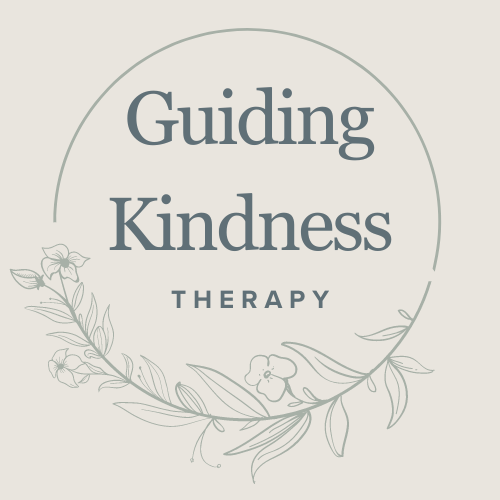Do I Need Cognitive Behavioral Therapy?
Deciding that you need therapy can be a make-or-break decision. For some people, it can be the best thing that ever happened to them; for others, not so much. In my time as a therapist, I have met many people who have said that they have tried therapy before and it didn’t work or they didn’t like it. I want to talk about one modality that is most commonly used in therapy practices: CBT, or Cognitive Behavioral Therapy.
Our team at Guiding Kindness Therapy are professionals in CBT therapy and when you read a little bit more about what CBT is and how it may benefit you, it may give you a clear next step in your mental health journey.
What Symptoms Does CBT Treat?
CBT can be used for almost any diagnosis, anywhere from anxiety disorders, addiction, PTSD, and Bipolar to Depression. CBT treats a variety of diagnoses if you are wondering if it will benefit you, the answer is most likely yes.
When Should You See a CBT Therapist?
You might want to consider seeing a CBT therapist if you are experiencing any of these issues:
Persistent negative thoughts: If you regularly engage in patterns of negative thinking, such as constant self-criticism, excessive worry, or feeling hopeless, CBT can help you identify and challenge these thoughts.
Anxiety or panic: If you're struggling with chronic anxiety, panic attacks, or overwhelming stress, CBT can help you learn coping strategies, reframe anxious thoughts, and gradually confront feared situations in a controlled way.
Depression: CBT is one of the most effective treatments for depression. If you're feeling consistently down, lack motivation, or are having trouble seeing things in a more balanced, optimistic light, CBT can help break the cycle of negative thinking and improve mood.
Obsessive-compulsive behaviors: If you engage in repetitive thoughts or actions (such as checking, cleaning, or repeating tasks), CBT, especially Exposure and Response Prevention (ERP), can help break these compulsive cycles.
What Are The 5 Stages of CBT?
In CBT therapy there are 5 different stages that you need to complete during treatment. This may feel like a lot but when you see the process, it showcases just how powerful and thorough CBT therapy can be for those suffering from anything from anxiety to OCD.
1. Assessment and Goal Setting
Purpose: The therapist and client work together to understand the nature of the problem, its triggers, and the specific symptoms or behaviors that need attention. The therapist may ask about the client's history, daily routines, and emotional responses.
Goal: To set clear, measurable goals for therapy, often focused on specific issues (e.g., anxiety, depression, or negative thinking patterns).
Example: If a client has anxiety about social situations, a goal might be to reduce anxiety in social settings by a certain amount over the course of therapy.
2. Psychoeducation
Purpose: The therapist educates the client about the CBT model, how thoughts influence emotions and behaviors, and the role of cognitive distortions (e.g., all-or-nothing thinking, and catastrophizing). Clients are taught how to identify and challenge these distorted thoughts.
Goal: To build awareness of how thoughts, feelings, and behaviors are interconnected, and to give clients tools to recognize unhelpful patterns.
Example: A therapist might explain how someone with social anxiety might automatically think, "I’ll embarrass myself," even in situations where there’s no real evidence to support this belief.
3. Cognitive Restructuring or Cognitive Challenging
Purpose: In this stage, the therapist helps the client recognize, question, and challenge negative or irrational thoughts. This is a core component of CBT, where the focus is on identifying cognitive distortions and replacing them with more balanced or realistic thoughts.
Goal: To change unhelpful thought patterns and replace them with more accurate, adaptive ones.
Example: If a client is consistently thinking, "I’ll never succeed," the therapist would work with them to identify evidence against this belief and help reframe it to something more realistic, like "I’ve faced challenges before and overcome them."
4. Behavioral Activation or Behavioral Interventions
Purpose: CBT is not just about changing thoughts but also about changing behaviors. This stage involves engaging in activities or behaviors that help improve mood or reduce distress. It may also involve gradual exposure to feared situations or tasks.
Goal: To break the cycle of avoidance or unhealthy behavior by encouraging the client to engage in positive, adaptive behaviors.
Example: For someone with depression who has been avoiding social activities, the therapist may encourage them to plan small, manageable outings or activities, gradually increasing their involvement over time.
5. Relapse Prevention and Maintenance
Purpose: As therapy nears its end, the focus shifts to preparing the client for maintaining progress and preventing relapse. The therapist and client develop strategies for dealing with future challenges and setbacks.
Goal: To ensure that the skills learned during therapy are sustained and applied long-term. Clients are taught how to manage future stress or setbacks without falling back into old negative thoughts and behavior patterns.
Example: A therapist may help the client create a "coping toolbox" of strategies to handle difficult situations, or develop a plan for how to return to therapy if symptoms return.
All in all, CBT therapy is an effective modality to use in the treatment of many different disorders. If you are interested in connecting with a CBT therapist please reach out and we can connect you with someone.
If you are in need of CBT therapy near you, consider Guiding Kindness Therapy. We serve the local Bala Cynwyd and Main Line communities as well as Philadephia. Virtual CBT appointments are also available for all Pennsylvania residents.
Contact us for your FREE 15-minute consultation call with us today.

